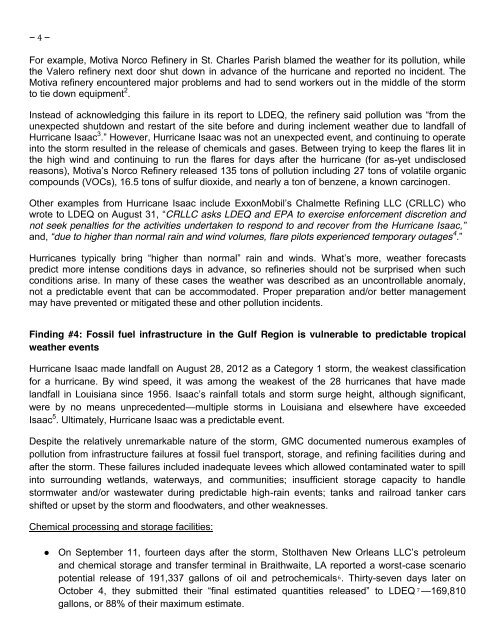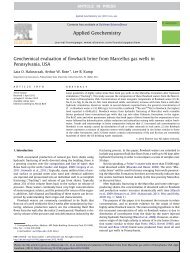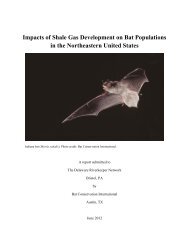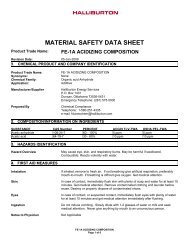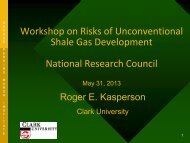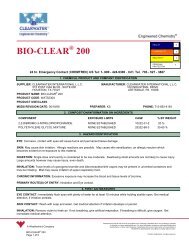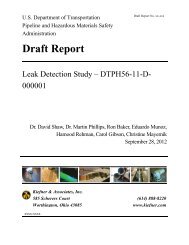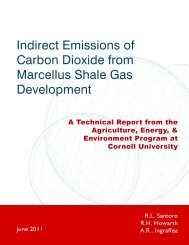Gulf Coast Coal and Petrochemical Facilities Still Not Storm Ready
Gulf Coast Coal and Petrochemical Facilities Still Not Storm Ready
Gulf Coast Coal and Petrochemical Facilities Still Not Storm Ready
Create successful ePaper yourself
Turn your PDF publications into a flip-book with our unique Google optimized e-Paper software.
– 4 –<br />
For example, Motiva Norco Refinery in St. Charles Parish blamed the weather for its pollution, while<br />
the Valero refinery next door shut down in advance of the hurricane <strong>and</strong> reported no incident. The<br />
Motiva refinery encountered major problems <strong>and</strong> had to send workers out in the middle of the storm<br />
to tie down equipment 2 .<br />
Instead of acknowledging this failure in its report to LDEQ, the refinery said pollution was “from the<br />
unexpected shutdown <strong>and</strong> restart of the site before <strong>and</strong> during inclement weather due to l<strong>and</strong>fall of<br />
Hurricane Isaac 3 .” However, Hurricane Isaac was not an unexpected event, <strong>and</strong> continuing to operate<br />
into the storm resulted in the release of chemicals <strong>and</strong> gases. Between trying to keep the flares lit in<br />
the high wind <strong>and</strong> continuing to run the flares for days after the hurricane (for as-yet undisclosed<br />
reasons), Motiva’s Norco Refinery released 135 tons of pollution including 27 tons of volatile organic<br />
compounds (VOCs), 16.5 tons of sulfur dioxide, <strong>and</strong> nearly a ton of benzene, a known carcinogen.<br />
Other examples from Hurricane Isaac include ExxonMobil’s Chalmette Refining LLC (CRLLC) who<br />
wrote to LDEQ on August 31, “CRLLC asks LDEQ <strong>and</strong> EPA to exercise enforcement discretion <strong>and</strong><br />
not seek penalties for the activities undertaken to respond to <strong>and</strong> recover from the Hurricane Isaac,”<br />
<strong>and</strong>, “due to higher than normal rain <strong>and</strong> wind volumes, flare pilots experienced temporary outages 4 .”<br />
Hurricanes typically bring “higher than normal” rain <strong>and</strong> winds. What’s more, weather forecasts<br />
predict more intense conditions days in advance, so refineries should not be surprised when such<br />
conditions arise. In many of these cases the weather was described as an uncontrollable anomaly,<br />
not a predictable event that can be accommodated. Proper preparation <strong>and</strong>/or better management<br />
may have prevented or mitigated these <strong>and</strong> other pollution incidents.<br />
Finding #4: Fossil fuel infrastructure in the <strong>Gulf</strong> Region is vulnerable to predictable tropical<br />
weather events<br />
Hurricane Isaac made l<strong>and</strong>fall on August 28, 2012 as a Category 1 storm, the weakest classification<br />
for a hurricane. By wind speed, it was among the weakest of the 28 hurricanes that have made<br />
l<strong>and</strong>fall in Louisiana since 1956. Isaac’s rainfall totals <strong>and</strong> storm surge height, although significant,<br />
were by no means unprecedented—multiple storms in Louisiana <strong>and</strong> elsewhere have exceeded<br />
Isaac 5 . Ultimately, Hurricane Isaac was a predictable event.<br />
Despite the relatively unremarkable nature of the storm, GMC documented numerous examples of<br />
pollution from infrastructure failures at fossil fuel transport, storage, <strong>and</strong> refining facilities during <strong>and</strong><br />
after the storm. These failures included inadequate levees which allowed contaminated water to spill<br />
into surrounding wetl<strong>and</strong>s, waterways, <strong>and</strong> communities; insufficient storage capacity to h<strong>and</strong>le<br />
stormwater <strong>and</strong>/or wastewater during predictable high-rain events; tanks <strong>and</strong> railroad tanker cars<br />
shifted or upset by the storm <strong>and</strong> floodwaters, <strong>and</strong> other weaknesses.<br />
Chemical processing <strong>and</strong> storage facilities:<br />
● On September 11, fourteen days after the storm, Stolthaven New Orleans LLC’s petroleum<br />
<strong>and</strong> chemical storage <strong>and</strong> transfer terminal in Braithwaite, LA reported a worst-case scenario<br />
potential release of 191,337 gallons of oil <strong>and</strong> petrochemicals 6 . Thirty-seven days later on<br />
October 4, they submitted their “final estimated quantities released” to LDEQ 7 —169,810<br />
gallons, or 88% of their maximum estimate.


